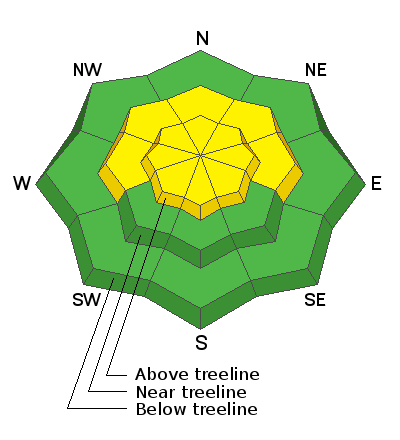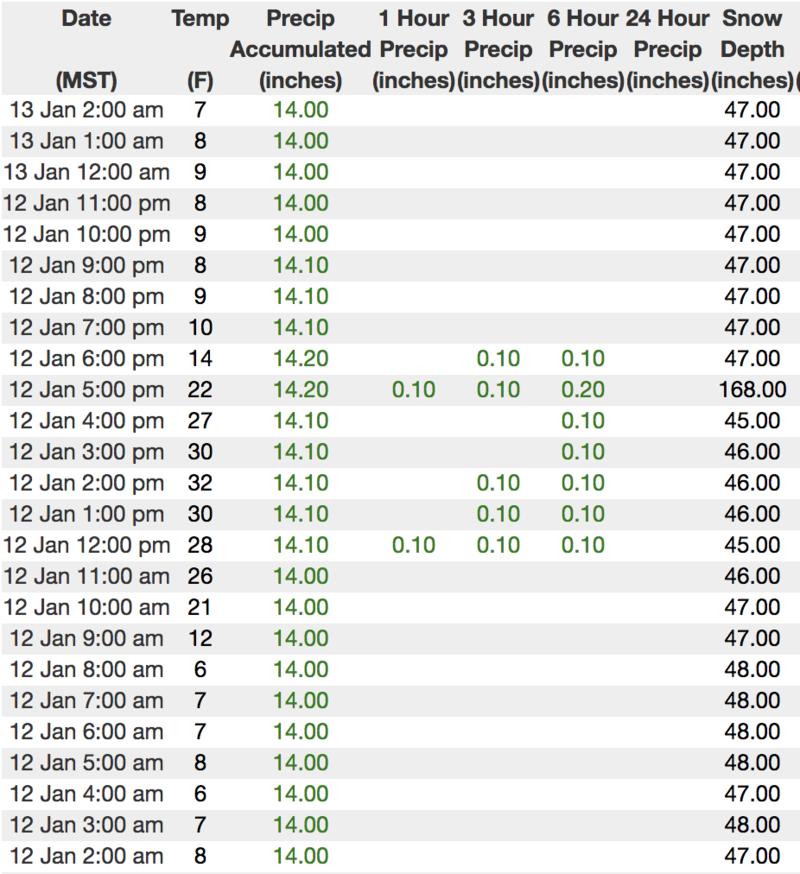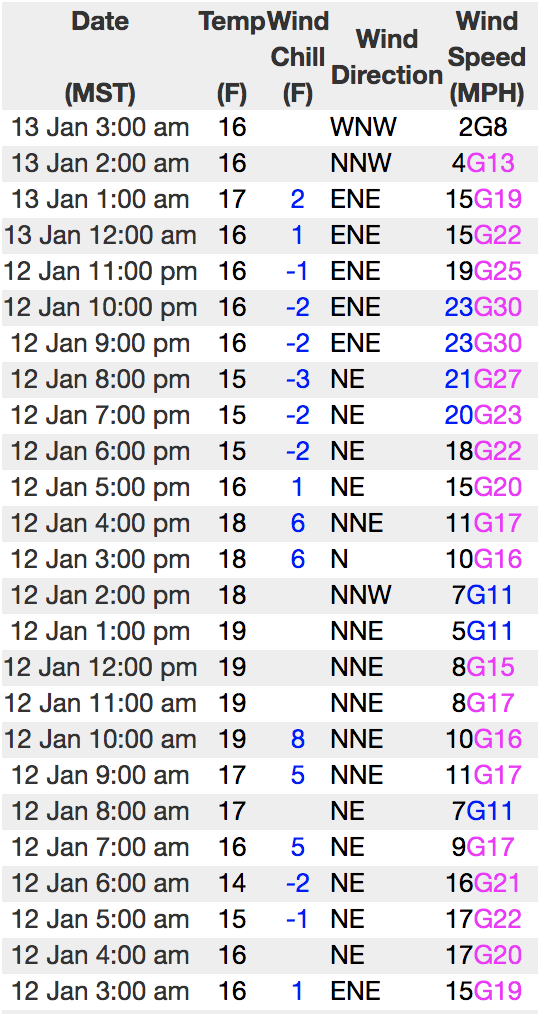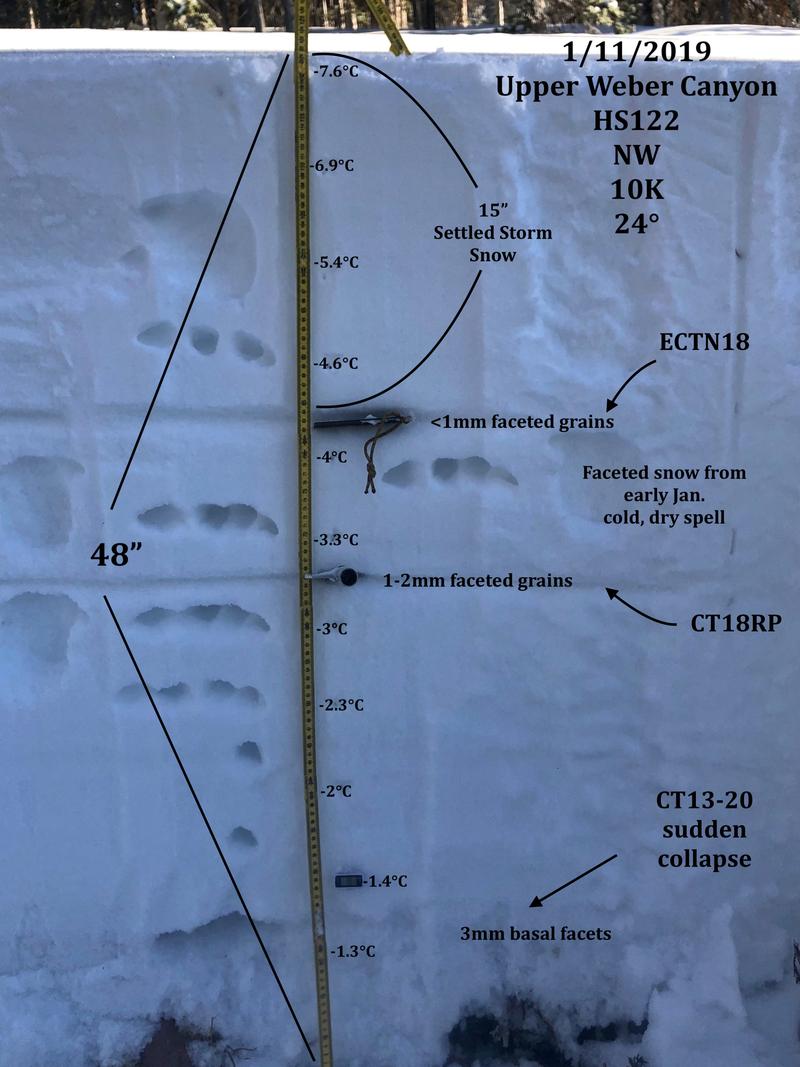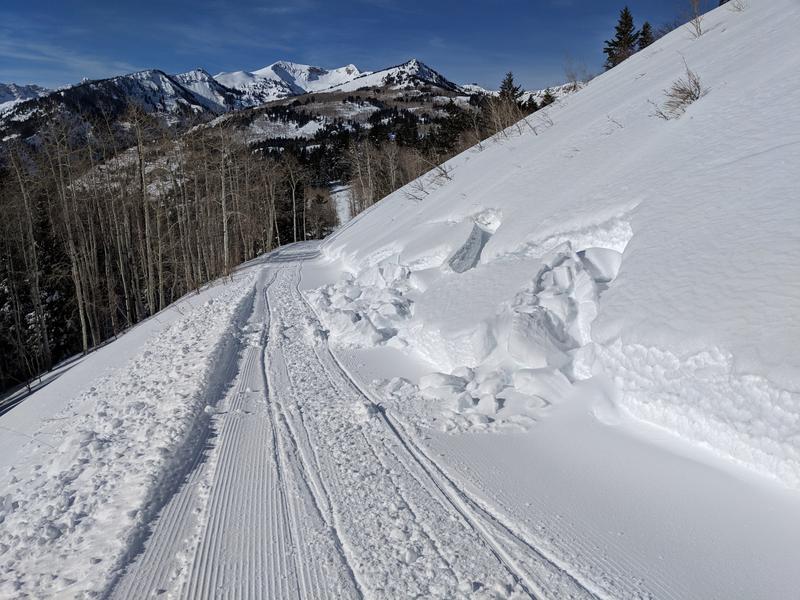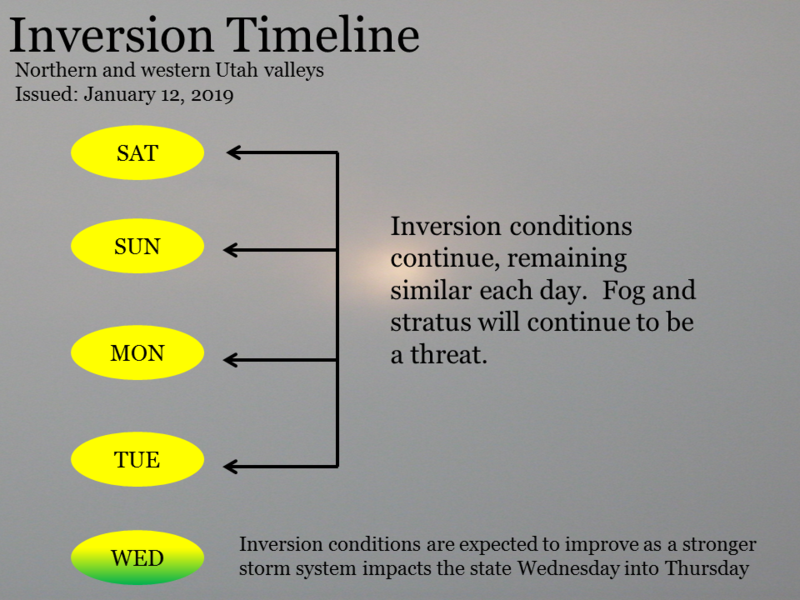Big thanks to Mike Poulsen and the great crew at Tri-City Performance along with the Park City Powder Cats for hosting this weeks Avy Moto 101
Stay tuned for more details regarding our next Sled Avy 101 in February.
Above the gunk, funk, and valley junk you'll find clear, clean air and temperatures in the teens. East and northeast winds bumped slightly into the 20's and 30's for a few hours last night, but have relaxed somewhat and currently blow less than 20 mph along the high peaks. Riding and turning conditions are straight-forward... low elevation terrain and sunny aspects took on heat the past few days and are crusted, but there's still plenty of cold, shallow snow on wind sheltered, shady slopes.
Above is hourly data from Trial Lake (9,945') along with recent wind data from Windy Peak (10,662'). To view more regional weather stations click
here.
A beautifully detailed pit submitted by JG who was in Weber Canyon yesterday, reveals some bad juju near our faceted layers of snow. More on his travels
here.
The pocket above was triggered yesterday on a steep, upper elevation north facing slope in Humpy Basin. While only 50' wide, it broke 4' deep, running 350' vertically and failed on weak snow near the ground. The sketchy thing is... this slide was triggered remotely from low on the slope.
On Friday, a very experienced avy forecasting team remotely triggered the avalanche in the image above while descending a lower angle, adjacent slope. Breaking 2'-4' deep and 400' wide, this slide was initiated from a distance, on an upper elevation southeast facing slope, broke to weak snow near the ground, and stacked up a tremendous amount of debris in the gully of the runout.
Now here's the curious as well as the spooky thing about this incident.... this is the 6th notable slide triggered on a southeast aspect which is quite unusual given the fact that we generally steer towards the sunny terrain when we're dealing with persistent weaknesses in the snowpack. However, a common theme we're seeing is this... nearly every big slide triggered since the New Years snow and wind event has had an easterly component to its aspect.
There's been no shortage of human triggered slides the past few days including a couple close calls, but fortunately everyone has come out on top. Please... let's keep it that way.

